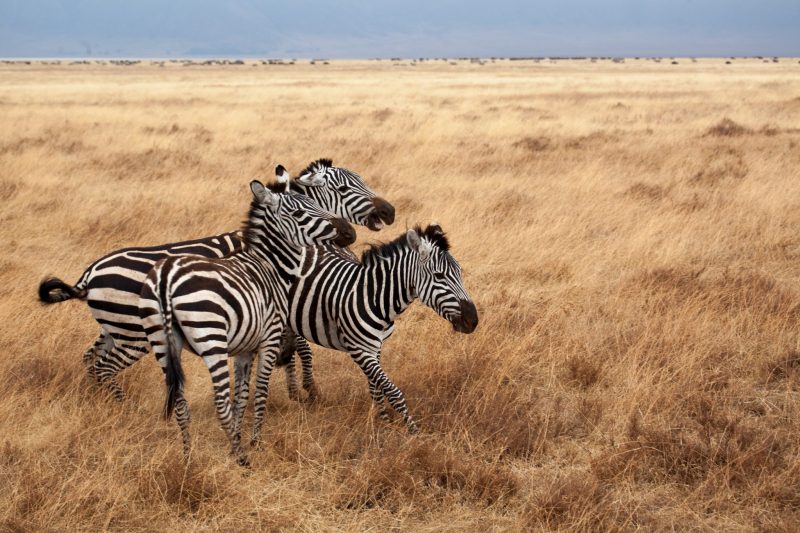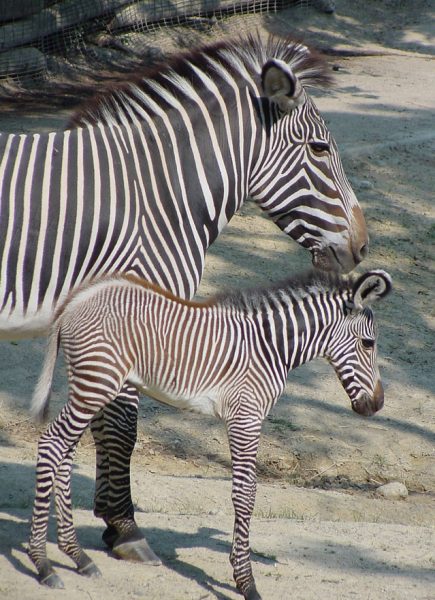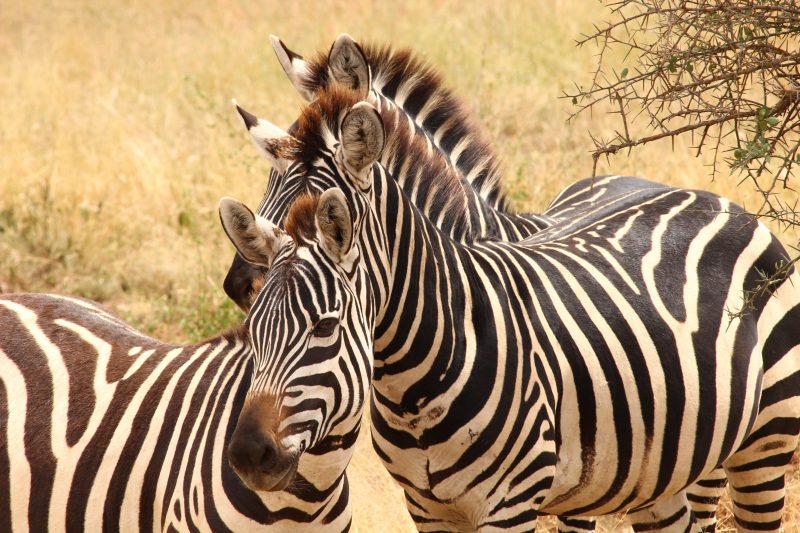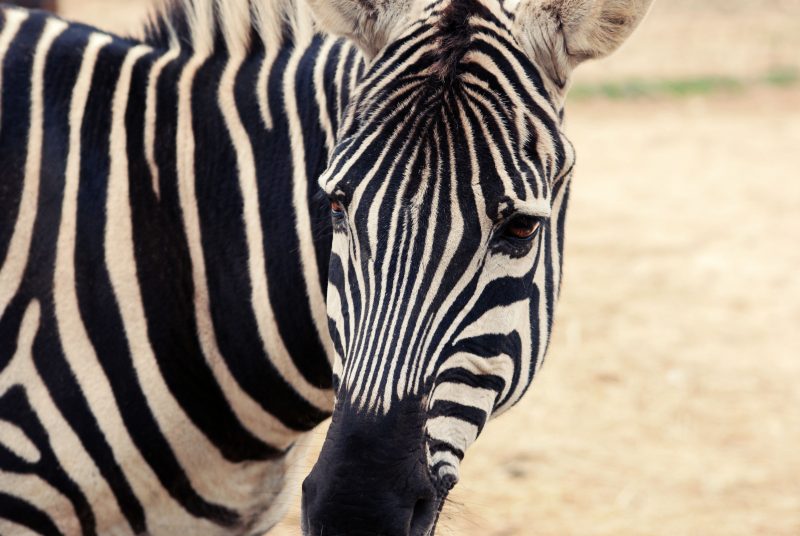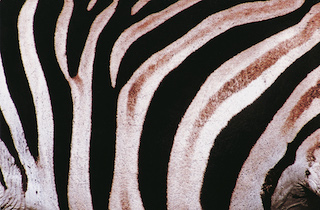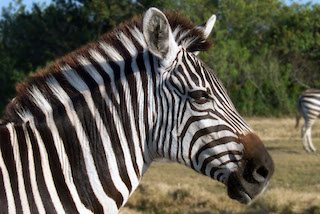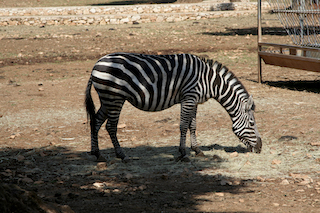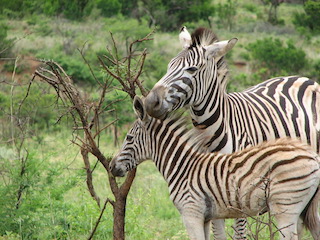Grevy’s Zebras In Kenya Is Numbered
The Grevy’s zebra is one of the most beautiful animals in Kenya. It is found in Kenya and Ethiopia. Grevy’s zebra is named after Jules Grevy who was the president of France in the 1880s. It is also the largest of the three species of zebra. It is tall and has large ears and a brown muzzle. But compared with other zebras its stripes are narrower. The unique thing about Grevy’s zebras is the lack of stripes on its belly.
The skin of Grevy’s zebra fetched a high price. Hence they used to be killed for their skins. But hunting was banned in 1977. Today the main threat is habitat loss. Sadly their numbers have dropped since the 1970s from 15,000 to 3,000 in a matter of decades. That is a 75% drop. Out of the 3000, around 600 are in captivity. There are 2,350 of them in Kenya alone.
Today Grevy’s zebra belongs to the endangered species. Therefore the long-term survival of Grevy’s zebra is moot. The wildlife authorities have taken some serious conservation initiatives. These actions have improved the status of Grevy’s zebras. However, there still face challenges. Laikipia and Borana are the names of two game parks in Kenya. They are home to the largest Grevy’s zebras. So let us take a visit to these game parks and see how the Grevy’s zebras are faring.
Chaos in Laikipia
Laikipia county is one of the 47 counties of Kenya. It is in the northern part of the country. It is just a 3 hours’ drive from Nairobi. The county is on the edge of the Great rift valley. It is one of the most important and protected wildlife areas. Laikipia is the most famous stronghold of wildlife outside the country’s national parks and reserves. People from all over the world visit it to witness some rare animals in the world. But invasions from neighbors scares away the animals. Attacks are becoming more and more menacing. Therefore residents are having a tough time dealing with it.
Herders kill wildlife
Recently around 10,000 herders have killed hundreds of wild animals including Grevy’s zebras. They invaders were from Pokot, Isiolo, Baringo and Samburu. Around 135,000 cattle invaded the wildlife areas. And they are becoming a threat to these animals who get in the way of shooting. In addition, they set fires to farms. Fire scares away wild animals. Most of the animals are among Kenya’s rare species.
Perpetrators destroy buildings
The invaders torched farm buildings. They destroyed crops. They drove hundreds and thousands of cattle into private properties and smallholdings owned by farmers. Three lodges have been closed down. They even burnt down one of the game lodge, the Suyian lodge. The last ranch they attacked was the Mugie conservancy. They broke its fences and stole kilometers of wires. The Mugie cattle business is on the verge of closing down. In the aftermath they left a trail of chaos and destruction in the county.
Encroachers attack residents
There has been a series of raids since 2013. The herders come armed with rifles, firearms and crude weapons. They use brutal force to attack. They shoot ranch workers. As a result, it left several people injured and 5 to 10 people dead. This spreads fear and ranch owners are moving guests, staff and cattle. This has been the latest and the most serious clash between the herders and residents. There have been protests by residents. Tension was high in the area.
Causes of conflict
The encroachers shoot and loot at will. They invade without any fear. It has left behind a trail of destruction. The effects of the invasions are felt beyond the region. The impact has spilled over into other areas. It is time to address this. Water scarcity and grazing land seem to be the cause of the conflict. But reasons for the invasions vary. The press reports that the recent drought brings about the encroachments. Residents believe that the tribal politicians use it as a ploy to win the upcoming election. And farmers believe they are a result of poor management by park authorities.
Drought causes invasions
Is there a link between the drought and invasions? Drought alerts have been issued for 11 counties. Around this area alone drought has affected 1.3 million people. The media links the invasions to the recent drought. The herders are in search of water and pasture for their cattle. Also, severe drought has brought on crop failure, and this has triggered fear of starvation. So the herders invade wildlife areas and private land wanting to secure enough lush grazing lands for their cattle. Hence there is tension between the herders and farm owners.
Politics causes invasions
Not all believe that herders are just looking for water for their cattle. Many believe the problem is political tensions. Land invasions are the latest expression of these tensions, and they peak closer to election. The tensions are due in part to geographic and ethnic diversity of the area. It has to do with power and politics. People are using the land issue to win support. Greed for money fuels ranch invasions. Laikipia straddles the racial divide between tribes who support and oppose the government. Therefore, they see it as a ploy to attack rival tribes.
Mismanagement causes invasions
Commercial farmers blame the wreck of once fertile pastures on overgrazing, which has rendered the grasslands untenable. Maintenance of overgrazed land is nil. The community leaders get aid money to maintain the grasslands. But they do not spend it wisely. Neither are they skilled at it. Too much livestock and too many people are scrambling for the depleting natural resources. The inefficiency and irresponsibility of the management make the situation worse.
Fear of devastation
Laikipia is home to Grevy’s zebra. It is one of the endangered species of zebras. Grevy’s zebras have been greatly affected by the chaos. The invasions have caused the deaths of more than 30 Grevy’s zebras. Graphic photos of a decapitated zebra have been doing the rounds on Facebook and Twitter and other social media outlets. It is a by-product of the violence. The loss of Grevy’s zebras is a sad affair. One large wildlife conservancy had to cancel millions of pounds’ worth of investment. They feared the future of its wildlife.
Serious poaching threat
Space for Giants is a conservation organization headquartered in Laikipia. They reckon that some of the hunters have links to poaching networks. These networks are supported by powerful politicians and they take advantage of the herders’ invasions. Independent investigations conducted by the Daily Nation revealed that this could advance their illegal trade. And they continually identify and exploit loopholes in the security operations within Laikipia for their selfish gain. Poaching could lead to the extinction of the already vulnerable Grevy’s zebras. Grevy’s zebras are poached for their lovely skin.
Response from government
Residents at Laikipia have urged the government to protect inhabitants from invasion. As a result, the leaders cautioned the pastoralists saying it is not only illegal but also a violation of the dwellers’ rights. Moreover, President Kenyatta has ordered all invaders to leave the Laikipia ranches. But apart from such lip service no other action or initiatives have been forthcoming from the government. However, the most disheartening part is that there seems to be no policy in place to deal with the herders. Probably, some politicians are behind it because these skirmishes only recur as elections approach.
Beauty of Borana
Borana Conservancy is a natural beauty situated in a rugged savannah across a 90,000-acre landscape. While snow-capped peaks lie to the south, a panorama of mountains lies to the north. It is a hidden gem known for its megafauna and its newly opened Arijiju. It is home to more than 300 bird species and more than 50 indigenous tree families. Guests to this charismatic place enjoy trail running, treetop canopy and horseback riding. Borana Rangers can arrange traditional game drives for wildlife tracking. It also offers fly-fishing excursions to Mount Kenya. Its three private houses and a lodge offer once in a lifetime experience for discerning travelers. It is also home to both the Maasai and the Samburu tribes.
Grevy’s Zebra thrives
Borana is one of the few places where you can see Grevy’s zebras. It has one of the largest populations of Grevy’s zebras. In 2014, authorities removed the fence separating Borana and the nearby Lewa Wildlife Conservancy. It benefitted these critically endangered animals. Other conservation initiatives on the property have also made Borana a safe refuge for the threatened species. Kenya Wildlife Service, the local communities, and Kenya government has collaborated to carry out conservation initiatives. The projects have turned out to be very successful. The successful collaboration between them has now made it a secure home for the Grevy’s zebras.
New York Times
Recently Borana Conservancy got a facelift by the New York Times, one of the most popular and widely circulated newspapers in the world. It stated that Borana is one of its top 52 tourist destinations for 2017. It was not only a privilege but also an honor to have recognized the Borana Conservancy. The other destinations mentioned alongside were Botswana, Canada, Marrakesh, Stockholm and Madrid. Compared to these world class cities, Borana may be a rugged place. But it still has its natural beauty.
We have seen the impact of Grevy’s zebra’s population in Laikipia and Borana. In Laikipia human intervention threatens their existence. Whereas in Borana they enjoy a comfortable co-existence with people. It is time to stop invasions and poaching and conserve Grevy’s zebra before they go extinct.
5 Frequently Asked Questions About Zebra Population
To receive a colourful digibook about Zebra with videos, images and text, please fill out the following form or simply email us on safaris@safari-center.com

